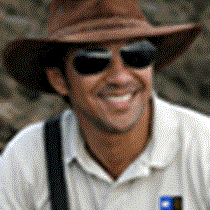Southern Isabela Island
The Island of Isabela is by far the largest in the archipelago; that simple fact is the main reason why we are not able to explore every single square inch of the island, even when our adventurous spirit would love to do so. Today, the weather conditions over our pre-scheduled itinerary prevent us to visit an area that would have been equally beautiful and exciting to visit; instead, the big swells that splashed on the landing area forced us to reposition the ship even more southerly to explore an area known as Elizabeth Bay. The whole sense of going to a place that is not regularly visited is very exciting. We all, naturalists and guests, were ready to disembark as soon as we arrived.
The water lagoon system and its intricate ecosystem were only understood once that you were literally inside of those passages. The view was not like anything we have seen before; extremely tall mangrove trees and water-ways surrounding them gave us the impression of being inside a jungle. The area does not have any trail for disembarkation, but the Zodiac ride that we all did was more than enough. Several species of rays: golden, eagle and marble rays were easily identified from the Zodiac, and we even saw two different kinds of sea turtles: green and the hawk bill turtle; the last one, has never been registered to nest in the Galápagos, but occasionally it is seen in hidden mangrove areas like this one.
Our afternoon took us to a different place, Punta Moreno. The apparent barrenness of the lava flows was only disrupted when we encountered several hidden brackish water lagoons formed long ago, when part of the surface of the lava collapsed and several species found in this, their opportunity to colonize this otherwise inhospitable area.
The Island of Isabela is by far the largest in the archipelago; that simple fact is the main reason why we are not able to explore every single square inch of the island, even when our adventurous spirit would love to do so. Today, the weather conditions over our pre-scheduled itinerary prevent us to visit an area that would have been equally beautiful and exciting to visit; instead, the big swells that splashed on the landing area forced us to reposition the ship even more southerly to explore an area known as Elizabeth Bay. The whole sense of going to a place that is not regularly visited is very exciting. We all, naturalists and guests, were ready to disembark as soon as we arrived.
The water lagoon system and its intricate ecosystem were only understood once that you were literally inside of those passages. The view was not like anything we have seen before; extremely tall mangrove trees and water-ways surrounding them gave us the impression of being inside a jungle. The area does not have any trail for disembarkation, but the Zodiac ride that we all did was more than enough. Several species of rays: golden, eagle and marble rays were easily identified from the Zodiac, and we even saw two different kinds of sea turtles: green and the hawk bill turtle; the last one, has never been registered to nest in the Galápagos, but occasionally it is seen in hidden mangrove areas like this one.
Our afternoon took us to a different place, Punta Moreno. The apparent barrenness of the lava flows was only disrupted when we encountered several hidden brackish water lagoons formed long ago, when part of the surface of the lava collapsed and several species found in this, their opportunity to colonize this otherwise inhospitable area.




